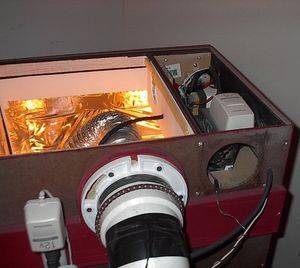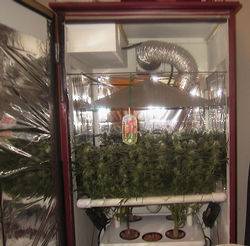DankSwayzee
Member
Hey guys, pleased to be involved in this place. I've been checking here and OG (when it was still alive) for a while but have finally now gained the space to do a small grow. I have 3 seeds recently hatched in solo cups with 2 lowryders and 1 mp5k. Right now as they are in their beginning stages I'm using 2 42watt cfls but they're soft white so I don't know if thats going to cut it at all, especially when these get bigger. I may have a male in one of the lowryders. Only a few days in and he's pretty tall and lanky but I haven't read up on the correct ways to identify these things yet. I would love to go with mh or hps but from what I understand, these applications generate more heat than cfls, so for now its cfls. I did find a specified "plant light" that is made by phillips and sold at home depot though... Anyone had experience with these? They have a blue color and are named agro lights, it sounds perfect but if it would be a waste then I don't want to bother.
Also, would anyone know in which section of home depot the foil reflective sheeting would be located? I'd rather not draw any attention at all so thats why I ask.
Has anyone bred a lowryder x mp5k? I could imagine the new strain "driveby".
I'm doing a lot of learning currently, sorry for the rather basic and senseless questions, I'm just excited about my first endeavor.
(oops, meant to post in the main area)
Also, would anyone know in which section of home depot the foil reflective sheeting would be located? I'd rather not draw any attention at all so thats why I ask.
Has anyone bred a lowryder x mp5k? I could imagine the new strain "driveby".
I'm doing a lot of learning currently, sorry for the rather basic and senseless questions, I'm just excited about my first endeavor.
(oops, meant to post in the main area)
Last edited:



 ). What you should have now is the ceramic light socket attached to a peice of metal with some white and black wires running out of it, which is connected to a whole jumble of wires connected together with wire nuts, which connects to a little white rectangle or black cylinder thing (the ignitor) and a heavy metal box type thing (the ballast) with some white and black wires running out of the jumble.
). What you should have now is the ceramic light socket attached to a peice of metal with some white and black wires running out of it, which is connected to a whole jumble of wires connected together with wire nuts, which connects to a little white rectangle or black cylinder thing (the ignitor) and a heavy metal box type thing (the ballast) with some white and black wires running out of the jumble.



